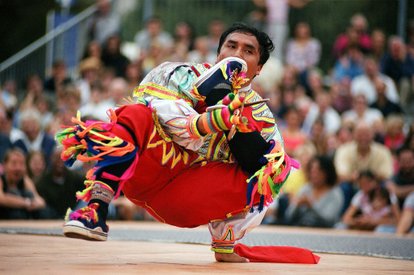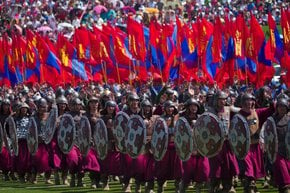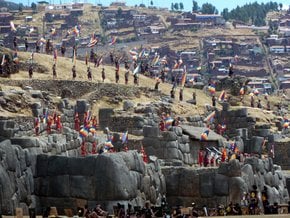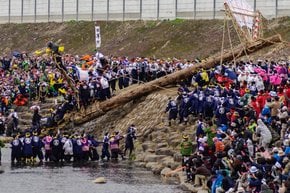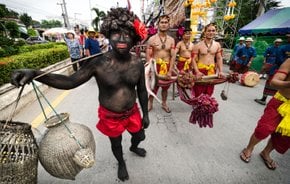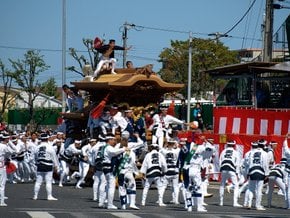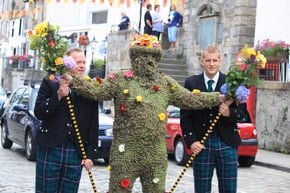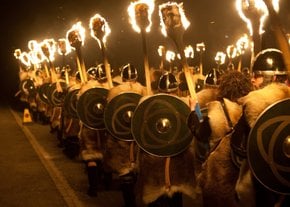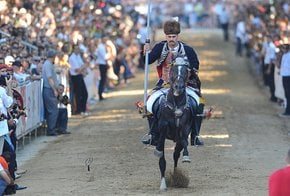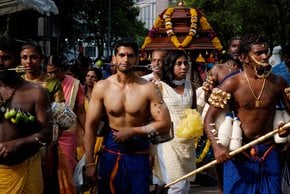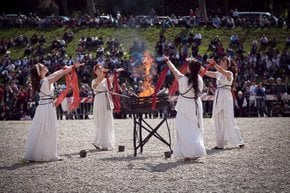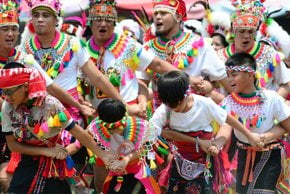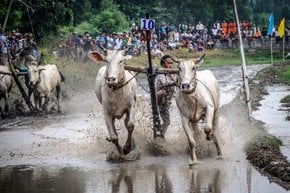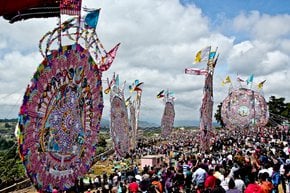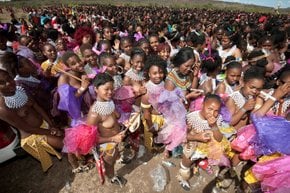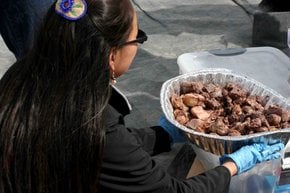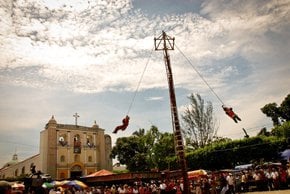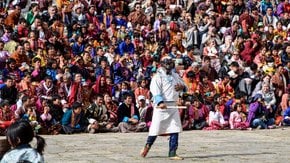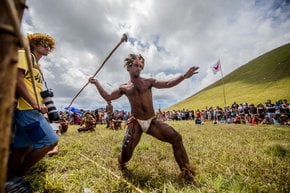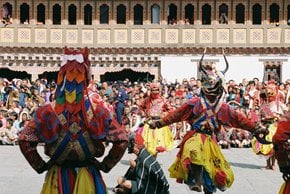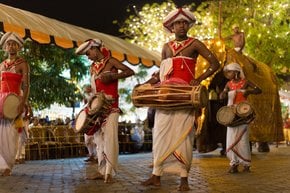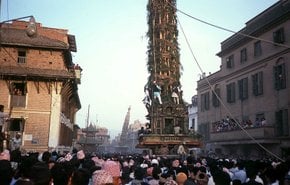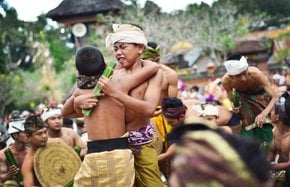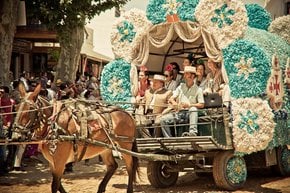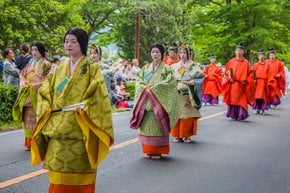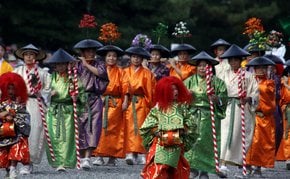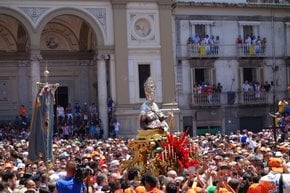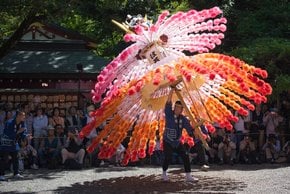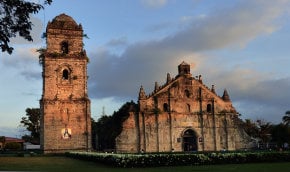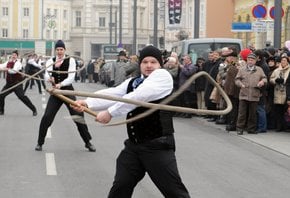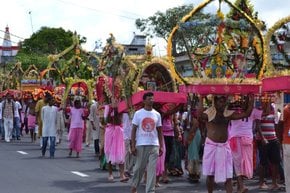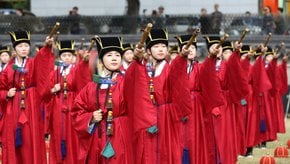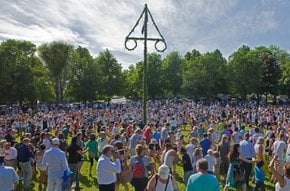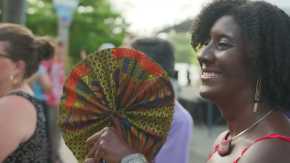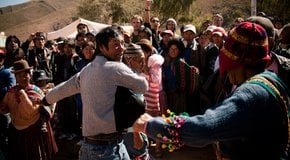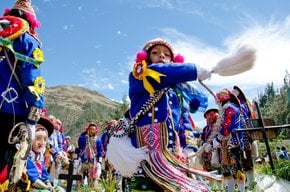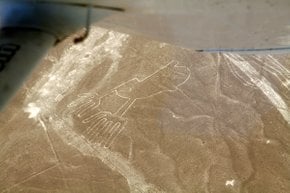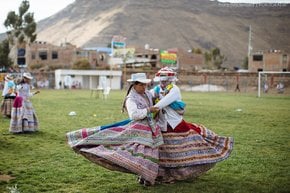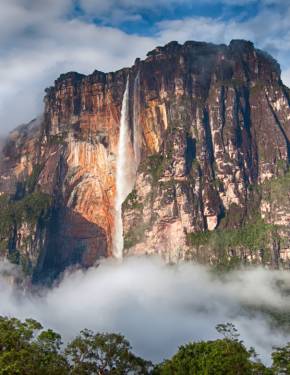Scissors Dance or La Danza de las Tijeras 2025 in Peru
Head to the ground, one foot up, arms criss-crossed and blades right in front of your face—this is the ancient Dance with Scissors
Dates: May–September | late December
Every nation on Earth has rituals or activities that are aimed to help man showcase their physical strength, bravery, and skills. Several communities in the South and Central Andes of Peru have kept such rituals since pre-Columbian times and one such is called La Danza de las Tijeras, or the Scissors Dance.
The Dance and Its Elements
The Scissors Dance involves teams of dancers, known as "cuadrillas," representing different communities. These dancers perform to the accompaniment of violins and harps in a competitive display called Atipanakuy. The dance is characterized by intricate steps, acrobatic movements, and the use of 10-inch-long (25 cm) iron rods resembling scissors, which the dancers hold in their right hand. The dancers must keep the scissors clicking throughout the performance, which can last up to twelve hours, often resulting in injuries.
Cultural Significance
According to local beliefs, the Scissors Dance is more than a display of physical prowess; it is also a spiritual ritual. It is said that dancers make a pact with the devil to ensure their survival during the performance. Historically, the Catholic Church permitted the dance only during its holidays, and dancers in their ornate costumes, adorned with small mirrors and golden fringes, were not allowed to enter the church.
When and Where to See the Dance
The Scissors Dance is performed during various local festivals, particularly between May and September, the dry season in Peru. It is also a highlight of Christmas celebrations, with Atipanakuy festivals taking place in several urban areas. Key locations to witness the dance include Ayacucho, Lima, Huaycán, Junín, and Arequipa.
Historical Background
The Scissors Dance has deep roots in Andean culture. It is believed to have originated as a ritual performed by Andean priests, known as tusug, who were also soothsayers, sorcerers, and healers. These priests resisted Spanish colonization and the imposition of new cultural norms. The dance evolved as a form of cultural resistance and adaptation, blending indigenous traditions with imposed Catholic rituals.
Dance and Music
The dance's choreography and music are integral to its performance. The dancers, called "danzantes," execute gymnastic leaps and complex steps to the rhythm of harp and violin. The scissors, made of two separate metal plates, produce a distinctive clicking sound that can be heard up to a kilometer away. This sound is central to the dance, symbolizing communication with the Andean deities.
Modern-Day Practice
Today, the Scissors Dance is recognized as a Cultural Heritage of the Nation and an Intangible Cultural Heritage of Humanity by UNESCO. It remains a vibrant expression of Andean culture and is performed at various festivals and cultural events worldwide. Notably, groups like the "Yawar Chicchi" continue to preserve and promote this dance, combining traditional elements with contemporary influences.

